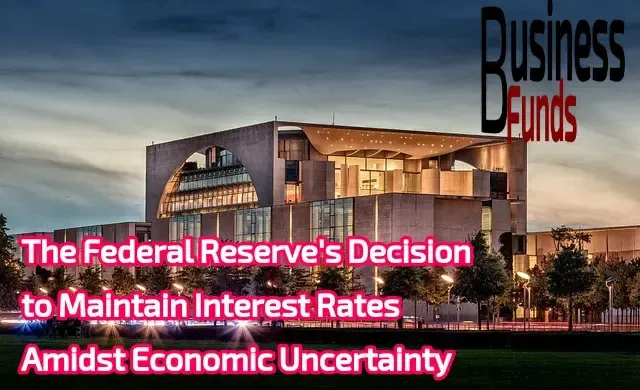Why the Federal Reserve's Decision to Maintain Interest Rates is Causing Debate
The recent announcement by the Federal Reserve to maintain interest rates at current levels has sparked a heated debate among policymakers, economists, and investors.
While some argue that the decision is necessary to support economic growth and employment, others fear that it could lead to further inflationary pressures and exacerbate existing wealth inequality.
Background on the Current Economic Environment
The United States economy has been experiencing a period of uncertainty, with rising inflation rates and ongoing concerns over the COVID-19 pandemic. Inflation, as measured by the Consumer Price Index (CPI), has risen sharply in recent months, reaching a 30-year high of 7% in December 2021.
This increase in prices has been driven by a variety of factors, including supply chain disruptions, labor shortages, and surging demand for goods and services as the economy reopens.
The Federal Reserve's Response
Despite this inflationary pressure, the Fed has opted to maintain its current policy stance, citing the need to support economic growth and employment in the face of ongoing uncertainty.
The central bank has committed to keeping interest rates near zero until it is confident that the economy has fully recovered from the pandemic and that inflation will remain at or below its target level of 2%.
Criticism of the Fed's Decision
However, some critics argue that the Fed's decision could lead to even greater inflationary pressure in the long run.
By keeping interest rates low, the central bank may be encouraging excessive borrowing and spending, which could fuel further price increases down the line.
Moreover, others have expressed concern that the Fed's decision could exacerbate existing wealth inequality by inflating asset prices and benefiting those with large stock and real estate holdings.
On the other hand, supporters of the Fed's approach point out that raising interest rates too quickly could stifle economic growth and harm employment, particularly for marginalized communities that have already been disproportionately impacted by the pandemic.
The Complex Nature of the Current Economic Environment
In the end, the Fed's decision reflects the complex nature of the current economic environment, and the difficult tradeoffs facing policymakers as they attempt to balance competing goals of promoting growth, limiting inflation, and ensuring stability.
Only time will tell whether the central bank's approach proves successful in achieving these objectives, or whether it will need to revisit its policy stance in the months ahead.
Conclusion
- The decision by the Federal Reserve to maintain interest rates at current levels has sparked a vigorous debate about the best path forward for the U.S. economy.
- While some see it as necessary to support growth and employment, others fear it could lead to further inflationary pressures and exacerbate wealth inequality.
- Ultimately, the situation remains fluid, and continued vigilance and analysis of economic data will be necessary to determine the most effective course of action going forward.



Comments
Post a Comment